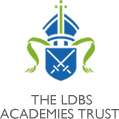404: Page Not Found
Whoops! The page you are looking for has been removed or had its name changed.


Whoops! The page you are looking for has been removed or had its name changed.
LAT was created in 2012 with five schools spread across the London Borough of Haringey. Our mission is to establish, maintain, carry on, manage and develop Church of England Schools across the Diocese of London. Our aim is that every child should have the opportunity to flourish and develop into a rounded adult who can live life to the full.
Visit Site